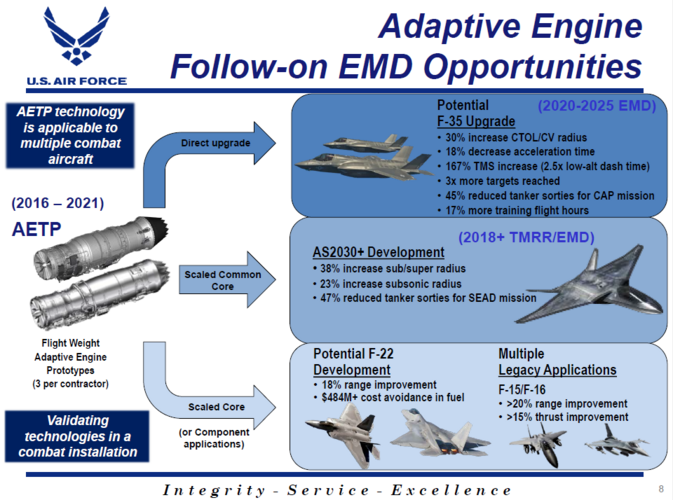I had assumed that the CCAs would be relatively short ranged but also have low runway requirements. RATO and drag chutes, if not something like XQ-58 that was totally runway independent. I was always surprised Kratos was not part of the Incr 1 competition. I interpreted the role of the UAVs as functioning as a forward passive sensor net (IRST, ESM), stand in jammer/decoy, and perhaps most importantly off board firing platform, since launching a missile is a huge IR event that cannot be concealed. To perform these roles, I assumed CCA would have to have a low enough radar and IR signature to get within easy AIM-120 range, since the bulk of the AAM stockpile would still be AMRAAM for the foreseeable future and CCAs would be numerous.
I figured NGAD itself would be very long ranged with a large payload and supercruise, with the goal of being the primary sensor and command platform. It possibly would also have a capability to internally carry very large, long range AAMs for use against high value targets (AEW, tankers) while the CCAs focused on fighters.
All of this is purely guesswork on my part and should not be taken as USAF requirements or strategy.
If I were to guess, I would say that perhaps the USAF has come to question whether a fast, long range fighter is a necessary or cost effective part of air dominance - other platforms might fill the sensor and command roles for less cost (B-21? RQ-180? Something else black?). Alternatively, the demonstrators might not have achieved sufficient increases in range to make NGAD more viable than conventional aircraft - it would need almost a 2000 mi /3500 km combat radius just to operate from the second island chain without tanker support. And this assumes that one thinks the second island chain will be a lot less vulnerable than the first, and assumption that might not have panned out.
USAF might be rescoping the project to be less ambitious to reduce costs and increase numbers. We do not know enough about the requirements to do more than guess.




